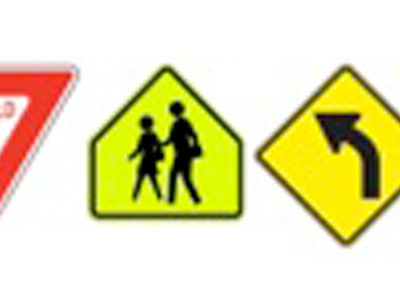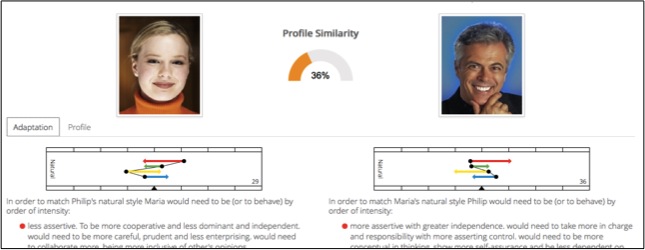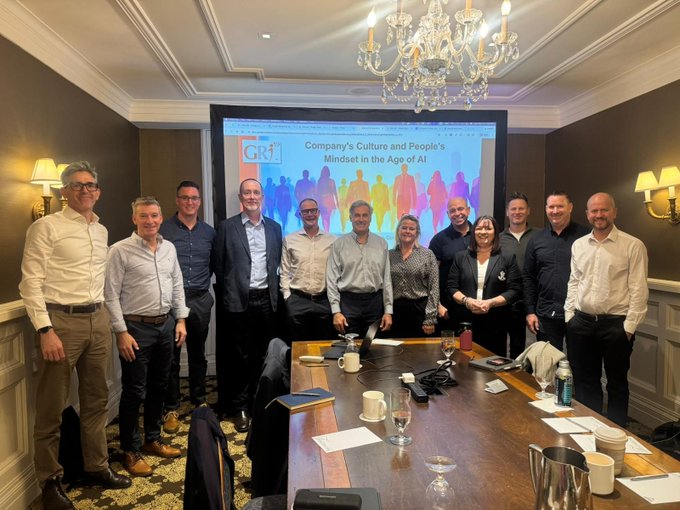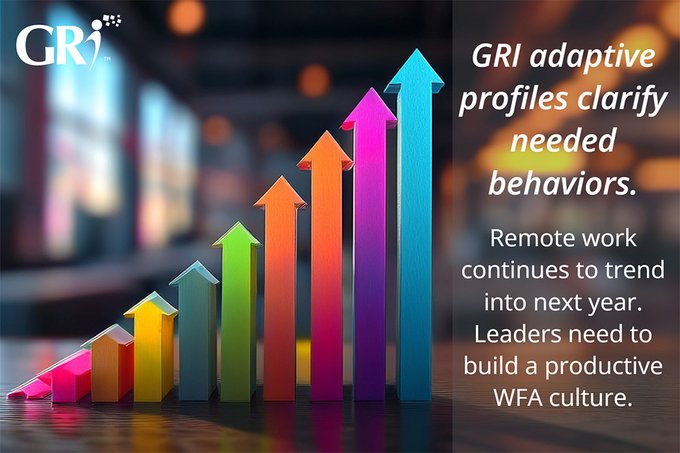The Language of People Management
Posted by Frederic Lucas-Conwell

The Language of People Management
Words are what make us human. Through their use, we are uniquely able to communicate everything from a simple statement to complex and abstract ideas.
Yet words often have different meanings for different people, depending on context, situation, personal background, expectations, and more. As a result, words can restrict our capacity to quickly and accurately describe behavioral aspects of people.
How do we minimize the problems inherent in words when we discuss behavior? We developed the GRI profiles with symbols so they provide a more valuable, complete assessment than words alone can, and increase our accuracy and efficiency when analyzing behavior.
The power of Symbols
Symbols can and do transcend cultures and overcome language barriers. Consider what the following signs tell us without any words:
| Music | Hand Sign Language | Traffic Signs |
|---|---|---|
 |
 |
 |
How much more effective than long sentences the signs can be to instantly convey information!
Writing with symbols: 1+1=2 ... is more effective than writing the same with words: one plus one equals two.
Communicating complex concepts with symbols: When taken to another level of reasoning, as in complex mathematics or physics, the equations communicate completely, making words unnecessary. The same is true for symbolic results of behavior measurements.
A Symbolic Language for People Management
Our experience over the past 18 years with personality measurement – or behavior measurement, as we prefer to describe it - is that its power resides not only in what is measured and how it is measured, but also in the quality of the output (results) and what you can do with it.
When the results of "personality" assessments are produced as narratives, or represented in words, they are by necessity generalized. As a result, their use ends up constrained to narrow applications, such as personal development.
When the behavioral measurement is designed for analyzing not only individuals but also jobs, teams and organizations, the results need to be presented so that they optimize the benefits of use in recruitment and leadership or organizational development.
The symbolic representation of the GRI (see example, right) enables us to address this issue. Individuals trained in the GRI can quickly review the symbolic GRI patterns, understand in great detail what they communicate in terms of behavior, motivations, drives, communication and decision-making styles, adaptations to the environment, and so much more. This clearly has a significant impact on the quality of decision-making, attitudes, and communications involving behaviors at different levels of an organization, in different cultures and for a large spectrum of applications.
Reducing Personality Factors In Assessments = Increased Precision
Since the GRI behavioral survey begins with words, let's look first at some background on linking words (adjectives describing behavior) to symbols.
Scientists studying personality in the late 1980's discovered that of the 18,000 personality descriptors in English, (numbers vary depending on each language) a core of around 400 are most commonly used. Then, applying a technique called "factorial analyses", those adjectives could be further reduced to a specific number of factors or dimensions - between two and seven - that help describe how people behave.
Why is this important to us?
- As we noted earlier, there is inherent imprecision with words when it comes to describing people's behaviors. A reduced number of key dimensions that concentrate or combine many personality attributes helps us gain precision.
- These key dimensions can be applied to both people and jobs so you can direct your attention to what matters for the organization too, not just the individuals.
- If behaviors, potential inefficiencies, and possible negative responses to job requirements or other team members can be revealed rapidly and in concise, core dimensions, it's possible to make corrective decisions without delay on both sides of the equation (person and job) and avoid the occurrence of non-productive events in the future.
- When the above information is provided in a symbolic representation that can be applied in many situations to help us to learn, remember, and understand more nuances, its usage becomes more regular and effective.
Personality Assessments: Narratives vs. Symbolic Profiles
In the world of personality and behavior assessments, narratives are commonly the output of the personality survey. They can range between two and 24 pages in length, and provide you with immediate, understandable results. These reports are produced by analyzing the row data or dimensions measured by the chosen technique, and and they include explanations of what those measures mean.

It works as if you had to read a 20 page narrative about the temperature of a place you are going to, with explanations about what temperature means, without having a thermometer or a number that can tell what the temperature of the place will be.
Narratives about personality remain an obstacle to a broader usage of the measurements for a number of important reasons. First, imagine attempting to remember and apply the information covered in a 20-page, written report that has likely been filed away in an employee's personnel record. It's impractical. Equally as important, these reports are not effective for the most beneficial applications at the job level, and the difficulties are even more obvious when working at team, group or organizational level.
In our situation with people and organizations, symbols add depth, speed and breadth to our understanding. The symbolic language of the profiles used in the GRI, once learned, enable instant and nuanced readings and analyses at different levels: personal, job and team, something that would be impossible to do with narratives.
Learning the GRI Symbolic Profiles
If the profiles are useful and impactful, how can we learn them? The answer is simple: the same way you would learn any language, through training and experience.
Fluency in the GRI is gained by learning to speak it progressively, by being exposed to real people and real organizational situations within the context of the profiles. Effective interpretation and application of the profiles cannot be learned only from books, online, or even videos. The profiles need to be explained, discussed and experienced. The two-day GRI class teaches the fundamentals of the GRI language with examples of real people and real organizations known by the participants.
For example, we developed the style-match feature of the GRI to be able to compare two profiles at a time, and stress the importance of learning with people you already know, i.e.:

- This is who you are
- This is who the other is
- This is how different we are from each other
- This is how we may want to work together
The learning process starts during the class, and continues after the class as you continue with cases of real people in your real work environment.
Benefits of the GRI Profiles
GRI has it's own language of words and symbols that once learned, ensure that we are communicating as clearly as possible about behavior and personality. Like a picture, a GRI profile is "worth a thousand words", bringing greater insight, depth, nuance, accuracy and efficiency when analyzing behavior.
Thanks to these profiles we are able to synthesize a large quantity of information. The profiles help us to remember the information and use it effectively. They help work not only at an individual level but also on jobs, teams and organizations.
The GRI profiles give us the tool we need to improve and refine our teams, our new hires and promotions, our people skills in general, and ultimately, our efficiency and profitability.
Latest Articles
Groupama Successful Transformation in Romania: The GRI, Catalyst for Profound Change
The history of Groupama in Romania is an eloquent testament to resilience, strategic vision, and the transformative impact of innovative management tools. Arriving at the...
Hybrid Work: A Management Revolution
The COVID-19 pandemic has acted as an unprecedented catalyst, radically transforming our approach to work. What was once a marginal practice has become the norm for many...
Leadership 3.0: Objective Insights for People-Centric Leaders
Steve, a brilliant entrepreneur, poured his heart into his work. His team at "Innovatech" was on the brink of a major breakthrough, a new app that promised to revolutionize...



